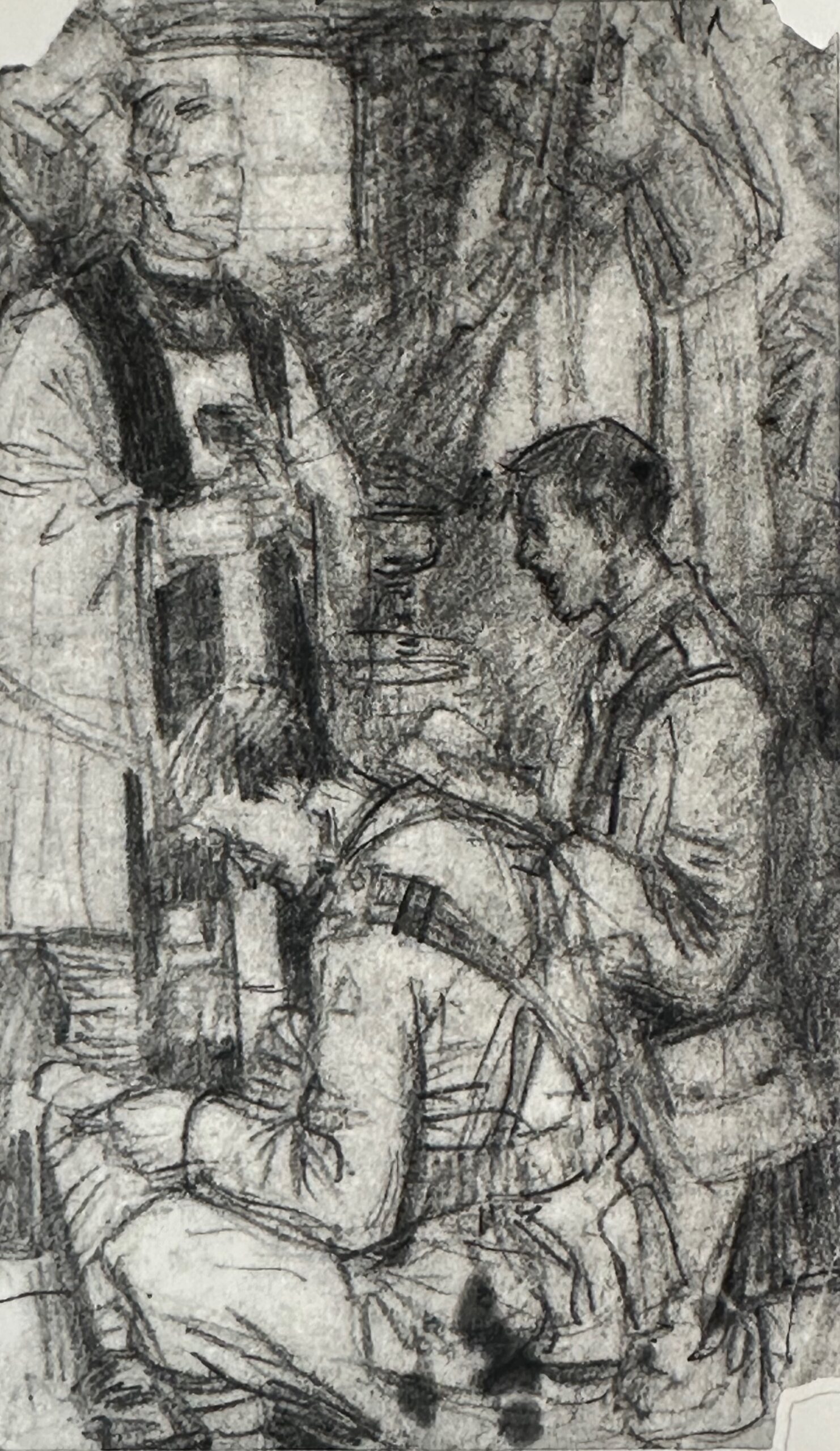
“Mass”, David Jones, 1917, Llanfrgell Genedlaethol Cymru – National Library of Wales.
In 1916 David Jones was badly wounded during the Battle of the Somme and was sent whom to recover. Convalescence gave him the leisure to draw and on his return to France, seeing his sketches, an officer put him on map work and field surveys which kept him away from the front line and gave him time to draw. However, in 1918 he caught trench fever and was sent home. He was been raised an Anglican but was beginning to explore Catholicism. In that second period in France he began to talk to the Catholic chaplain. One day when out looking for wood, he came upon a Mass being celebrated in a broken down byre. He later wrote to René Hague about this Mass being celebrated for “a few huddled figures in Khaki”. This singular encounter made a huge impression on him. Here we have the drawing he made. This greatly interests me because it resonates with the experience of others. For example, something similar is recorded about the young John Gray, who as Canon John Gray would be instrumental in the foundation of this chaplaincy. He too was in France but he was staying with Catholic friends and it was long before the trenches of the the First World War were dug. While out walking one morning he came upon a priest saying mass in the countryside for “some peasants” and knew that this was “the real thing”. It was while St Bernadette was gathering wood along the River Gave outside the town of Lourdes that Our Lady appeared to her. And here with our back-to-front chapel, there is a regular stream of people who come to the gate. Perhaps it is to view the chapel or the statue. Now whether or not they heed him, our St Dominic beckons them towards the altar and the tabernacle. Perhaps in the fullness of time some will come to realise that this place truly has the “real thing”. Let pray that it may be so.
The Catholic Chaplaincy serves the students and staff of the University of Edinburgh, Edinburgh Napier University and Queen Margaret University.
The Catholic Chaplaincy is also a parish of the Archdiocese of St Andrews and Edinburgh (the Parish of St Albert the Great) and all Catholic students and staff are automatically members of this parish.